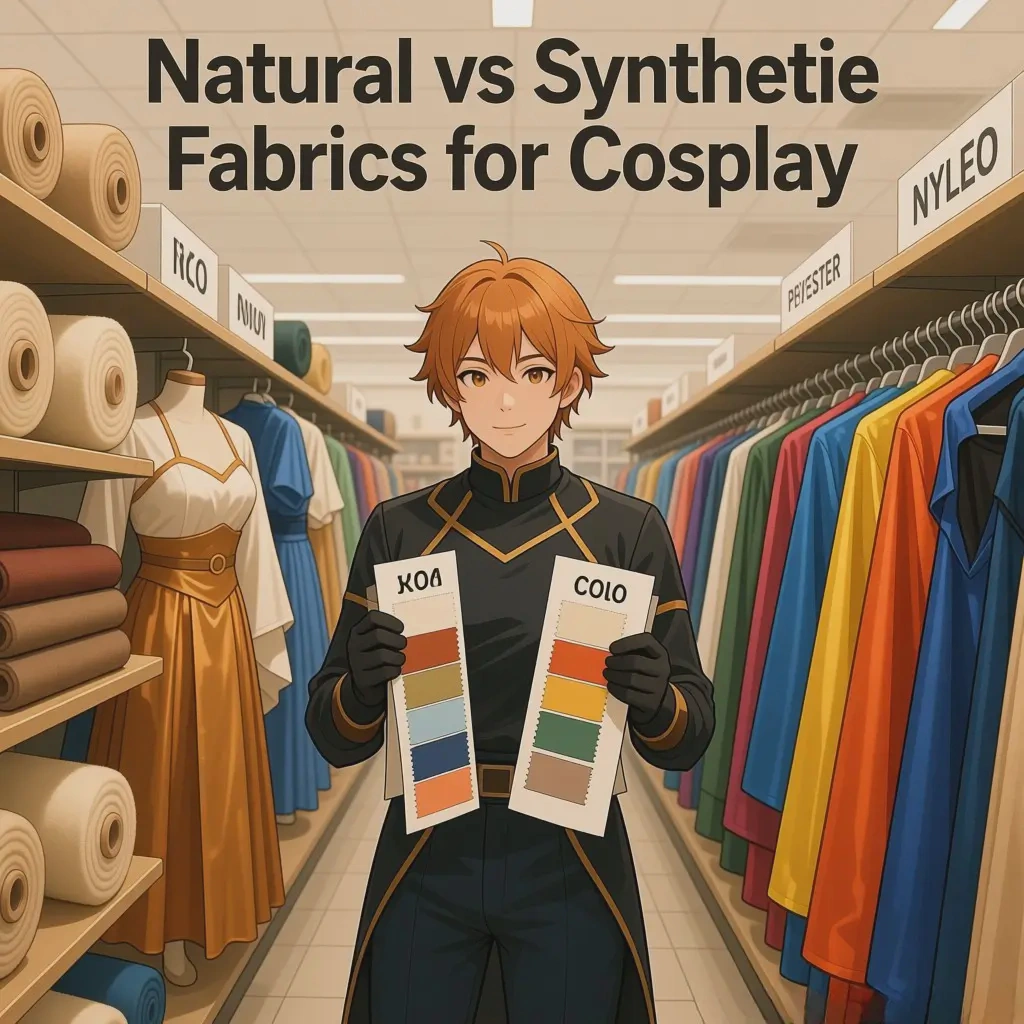Is it Better to Buy Natural or Synthetic Fabrics for Cosplay?
Introduction
When embarking on a cosplay project, one of the key decisions is choosing between natural and synthetic fabrics. Each type comes with its own set of advantages and disadvantages, and the right choice depends on various factors. This article will explore these aspects to help you make an informed decision.
1. Aesthetic Considerations
1.1 Natural Fabrics
- Cotton: Cotton can offer a soft, natural look that is suitable for many cosplay styles. For example, it can mimic the simple, everyday clothing of characters from slice - of - life anime or historical cosplays. Its matte finish gives a down - to - earth appearance. In period-piece cosplays, high-quality cotton can replicate the look of traditional, hand-woven fabrics.
- Silk: Silk is renowned for its luxurious sheen. It drapes gracefully, making it perfect for creating elegant, flowing costumes such as those of fantasy princesses or high-society characters. The smooth surface of silk catches the light in a way that adds a touch of sophistication to the cosplay.
- Wool: Wool has a unique, textured appearance. It can be used to create a rustic or formal look, depending on the type of wool. Tweed-like wools are great for creating the appearance of a character's warm, winter-appropriate clothing or a detective's classic overcoat.
1.2 Synthetic Fabrics
- Polyester: Polyester can be engineered to have a wide range of appearances. It can imitate the look of silk, satin, or even leather. For cosplays that require a specific sheen or a more "costume-like" appearance, polyester can be a good choice. Some polyester fabrics have a high-gloss finish that can make a cosplay stand out on the convention floor.
- Nylon: Nylon often has a smooth, shiny appearance, especially when used in spandex-blended forms. It's commonly used for creating the sleek, high-tech look of sci-fi or superhero costumes. The sheen of nylon can give the impression of a modern, synthetic material, perfect for characters with advanced technology-based outfits.
2. Durability and Maintenance
1.1 Natural Fabrics
- Cotton: Cotton is relatively durable but may wrinkle easily. It can withstand regular wear and tear, but if the cosplay involves a lot of movement or rough handling, it might develop creases. However, it is easy to care for; most cotton fabrics can be machine-washed, but it's important to follow the care instructions to prevent shrinking.
- Silk: Silk is delicate and requires more careful handling. It can snag easily on rough surfaces, and exposure to sunlight for long periods can cause the color to fade. Dry-cleaning is often recommended for silk cosplay costumes to maintain their quality.
- Wool: Wool is quite durable and resistant to wrinkles to an extent. However, it can be prone to felting if washed incorrectly. It's best to wash wool in cold water and lay it flat to dry to prevent stretching.
1.2 Synthetic Fabrics
- Polyester: Polyester is highly durable, wrinkle-resistant, and color-fast. It can withstand a lot of abuse, making it ideal for cosplays that will be worn for long periods or in active situations. It is also easy to clean, usually machine-washable in cold water.
- Nylon: Nylon is extremely durable and abrasion-resistant. It can handle a great deal of movement and is less likely to tear. It's also easy to care for, similar to polyester, and can be machine-washed.
3. Comfort and Breathability
1.1 Natural Fabrics
- Cotton: Cotton is breathable, allowing air to circulate through the fabric. This makes it comfortable to wear, especially in warm environments. The natural fibers absorb moisture, keeping the skin dry and reducing the likelihood of sweating.
- Silk: Silk is also breathable and has a smooth, cool feel against the skin. It is suitable for cosplays where comfort is important, but its breathability may be slightly reduced if it is tightly woven.
- Wool: Wool can be breathable when it's a lighter weight, but it can also trap heat. In cold environments, this is an advantage, but in warm conditions, it may cause sweating. However, modern wool blends are often designed to be more breathable.
1.2 Synthetic Fabrics
- Polyester: Polyester is less breathable compared to natural fibers. It can trap heat and moisture, making it potentially uncomfortable in hot or humid conditions. However, some advanced polyester fabrics now incorporate moisture-wicking technology to improve comfort.
- Nylon: Nylon is also not as breathable as natural fibers. It can feel warm and sticky when worn for long periods in hot weather, but like polyester, some nylon-based fabrics are designed with features to enhance breathability.
4. Cost
1.1 Natural Fabrics
- Cotton: Cotton can be relatively affordable, especially in its basic forms. However, high-quality, long-staple cotton or organic cotton may be more expensive. For budget-conscious cosplayers, cotton can be a good option, especially when buying in bulk.
- Silk: Silk is generally more expensive due to its production process. High-quality silk fabrics can be a significant investment, but they offer a luxurious look that is hard to replicate with synthetic alternatives.
- Wool: Wool can vary in price. Basic wool fabrics may be moderately priced, but fine-quality wools, such as merino wool, can be more costly.
1.2 Synthetic Fabrics
- Polyester: Polyester is often more budget-friendly, especially when compared to silk or high-end wool. It offers a cost-effective way to create cosplays with a wide range of looks.
- Nylon: Nylon is also relatively affordable and can be a great option for cosplayers on a tight budget, especially when used for creating durable, functional costumes.
FAQ
Q: Can I use a blend of natural and synthetic fabrics for cosplay?
A: Absolutely! Fabric blends can combine the best of both worlds. For example, a cotton-polyester blend can offer the breathability of cotton and the wrinkle-resistance of polyester. This can be a great option for cosplays where both comfort and durability are important.
Q: How do I test the fabric's properties before buying?
A: If possible, feel the fabric. Check for softness, texture, and stretch. You can also look at how the fabric drapes. Additionally, check the fabric's label for information on composition, care instructions, and any special properties. Online reviews can also provide insights into the fabric's performance.
Conclusion
There is no one - size - fits answer to whether natural or synthetic fabrics are better for cosplay. It depends on your specific cosplay requirements, including aesthetic preferences, durability needs, comfort considerations, and budget. By understanding the characteristics of each type of fabric, you can make the right choice to bring your cosplay to life.
Relevant Dofollow Links:
Fabric.com





